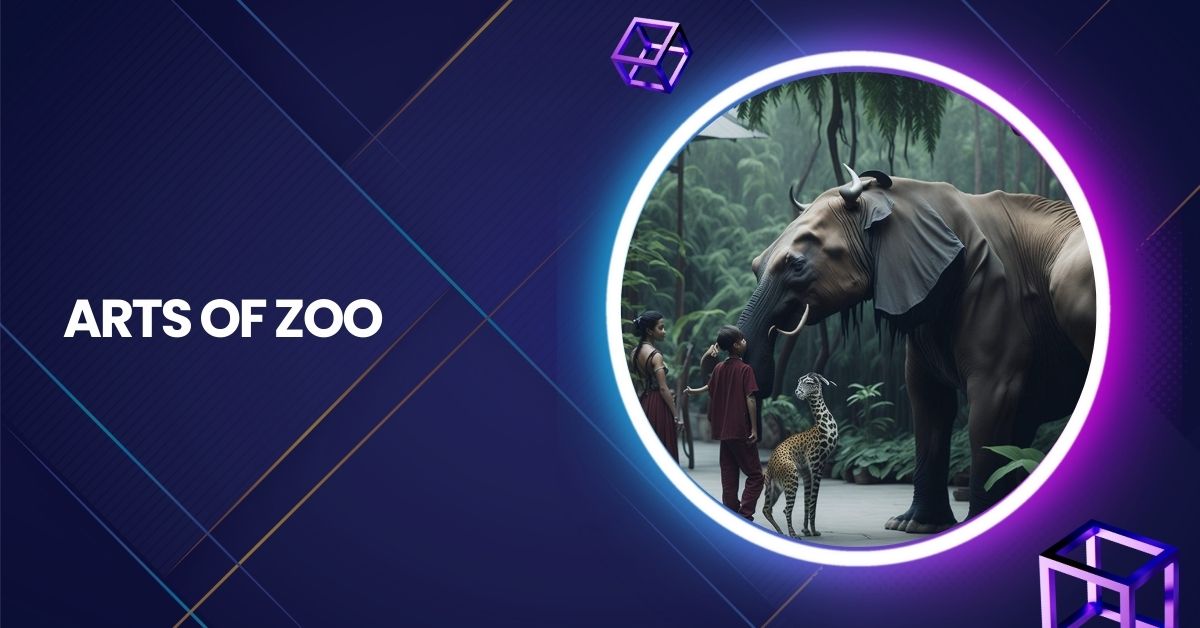Zoos have increasingly become venues for artistic expression, merging the natural world with human creativity. This trend is evident in various zoos across the United States and beyond, where art installations, sculptures, and exhibitions celebrate wildlife and raise awareness about conservation.
Artistic Programs and Exhibitions
Phoenix Zoo’s “Art on the Wild Side”:
This program showcases rotating exhibits in the Savanna and Wild Side Gallery, featuring artists focusing on wildlife and conservation. These exhibitions use various media, including photography and mixed media, to inspire visitors and promote the zoo’s mission of caring for the natural world.
Virginia Zoo’s Sculptures:
The Virginia Zoo hosts several famous statues and sculptures, such as a life-sized elephant made of aluminum butterflies and a mermaid painted to resemble a tiger. These installations enhance the zoo’s aesthetic appeal and serve as educational tools and photo opportunities for visitors.
Read: Mp3 Juice Free Downloader – The Complete Guide In 2024!
North Carolina Zoo’s “Art in the Park”:
With over 150 art pieces spread across the zoo, this initiative includes sculptures, paintings, and murals that celebrate the diversity of nature. The art collection aims to connect visitors emotionally and intellectually with wildlife, fostering a deeper appreciation for conservation.
Historical Context of Animal-Themed Art
Animal-themed art has a rich history, dating back to ancient civilizations where animals were revered as sacred symbols. During the Renaissance, artists like Leonardo da Vinci and Albrecht Dürer began depicting animals more realistically, reflecting a growing interest in nature. This tradition has evolved, with contemporary artists exploring both realistic and abstract interpretations of animals.
Notable Contemporary Artists
- Charley Harper: Known for his minimalist yet detailed wildlife paintings, Harper’s work has influenced how people perceive and appreciate the natural world. His unique style simplifies complex forms into basic shapes, capturing the essence of the animals he depicts.
- Tiffany Bozic: Bozic’s surrealist paintings blend reality and fantasy, often featuring animals intertwined with elements of nature. Her work invites viewers to ponder humanity’s relationship with the natural world.
The “Art of Zoo” Trend on Social Media
Unfortunately, the phrase “art of zoo” has also gained notoriety due to a disturbing trend on social media, particularly on platforms like TikTok. This trend involves content that is explicitly abusive and harmful to animals, causing significant public outrage and prompting calls for stricter content moderation and legal action.
Addressing the Issue
- Reporting Harmful Content: Users encountering “art of zoo” content are urged to report it immediately to social media platforms and, if necessary, to law enforcement. Documenting and reporting the content helps remove it from the public view and initiate investigations.
- Public Reaction: The revelation of this trend has led to widespread disgust and a push for greater accountability from social media companies. Parents, mental health professionals, and advocacy groups are particularly vocal, emphasizing the need for better online safety measures and content moderation.
- Educational Efforts: The backlash has also spurred discussions about digital literacy and fostering a safe online environment. Experts suggest that increased awareness and education about internet safety can help prevent the spread of such harmful trends in the future.
Read: NFL Bite – Enhancing Your Football Viewing Experience!
FAQs
1. What is the “Art of Zoo” trend on social media?
The “Art of Zoo” trend refers to disturbing content involving animal abuse shared on platforms like TikTok. It has sparked public outrage and calls for stricter content moderation and legal action against such materials.
2. How are zoos incorporating art into their environments?
Zoos integrate art through sculptures, installations, and exhibitions. Examples include the Virginia Zoo’s aluminum butterfly elephant sculpture and the North Carolina Zoo’s extensive collection of animal-themed art.
3. Who are some notable contemporary animal-themed artists?
Charley Harper and Tiffany Bozic are renowned for their unique styles. Harper uses minimalist shapes to depict wildlife, while Bozic’s surrealist paintings explore the connection between humans and nature.
4. How can harmful “Art of Zoo” content be reported?
Harmful content should be reported to the platform using its reporting features. If illegal, it should also be reported to law enforcement. Document the URL or username and avoid engaging with the content.
5. What is the historical significance of animal-themed art?
Animal-themed art dates back to ancient civilizations, where animals were considered sacred. During the Renaissance, artists like Leonardo da Vinci depicted animals more realistically, reflecting a growing interest in nature.
6. What ethical concerns relate to the “Art of Zoo” trend?
The “Art of Zoo” trend raises significant ethical concerns about animal abuse and the responsibilities of social media platforms to prevent the spread of such harmful content. It underscores the need for better online safety measures.
Conclusion
The “arts of the zoo” encapsulates both the positive and negative interactions between humans and animals through art. While zoos worldwide use art to enhance visitor experiences and promote conservation, a harmful social media trend has also tainted the term. Addressing this duality involves celebrating the artistic endeavors that connect us with nature and combating the online content that exploits animals. By appreciating the beauty of animal-themed art and taking a stand against abuse, we can foster a more respectful and harmonious relationship with the natural world.
Also Read:
